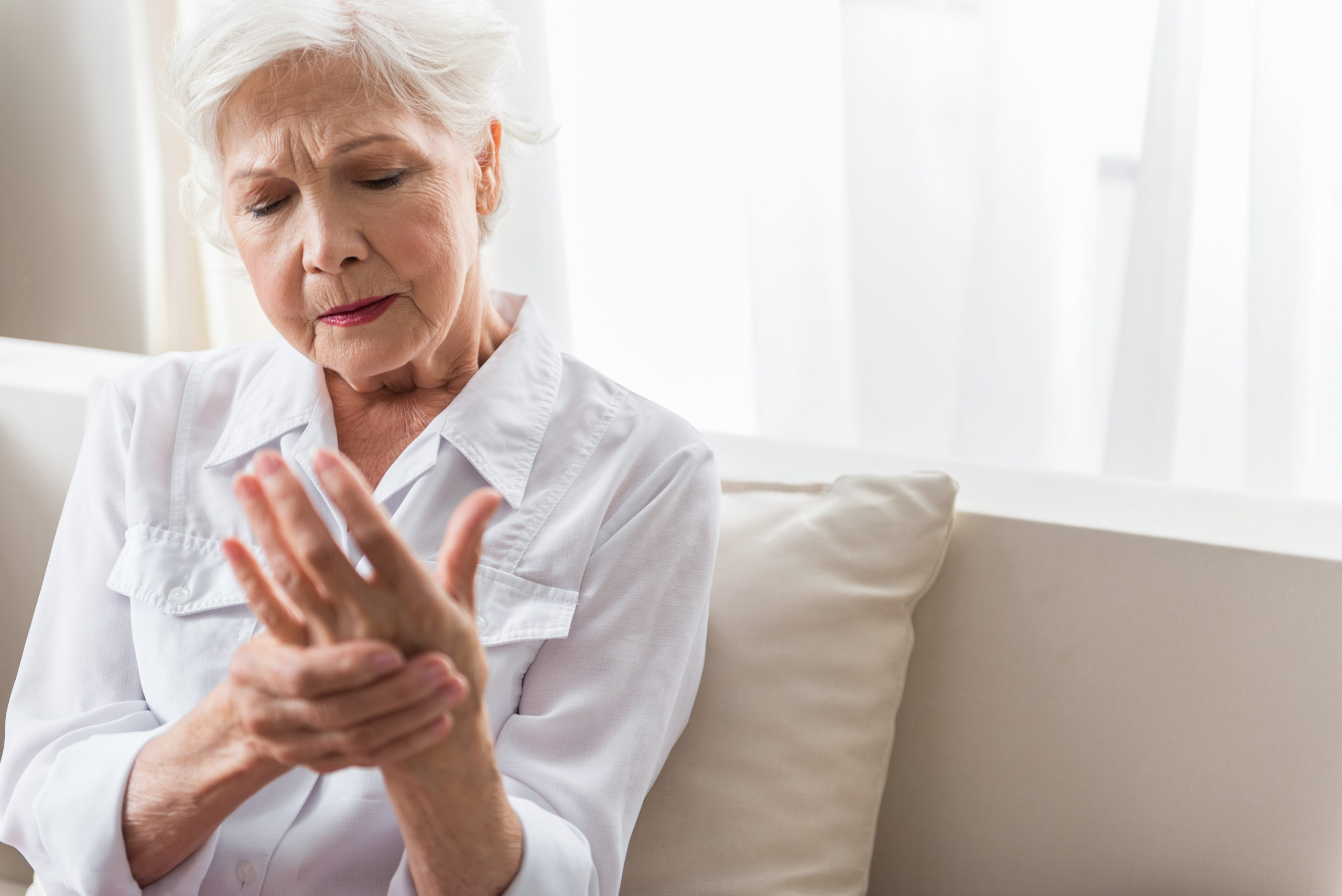One of the biggest issues that seniors face is managing health issues, with one of the most common being chronic pain conditions. Joint pain is one of the most common, with half of all people over 65 experiencing it to some degree. While it was previously thought that joint pain was an unavoidable part of aging, new research has shown that it can largely be avoided with proper long-term care. Read on for our top tips to reduce joint pain for seniors.
Causes of Joint Pain for Seniors
Some people experience near-constant joint pain, while others may only have occasional discomfort. Whatever the case, its cause is typically somewhat similar. For seniors, the most common cause is arthritis. This comes in the form of osteoarthritis, where the cartilage between bones wears away over time, or rheumatoid arthritis, which is a chronic condition leading to swelling in joints and potentially causing them to become deformed. There are several other health conditions that can cause chronic joint pain, such as gout, bursitis, or tendinitis.
There’s also conditions that can cause temporary flare-ups in joint pain. Injuries such as broken or sprained bones will cause an increase in swelling and inflammation in the affected area while it’s healing. Viral infections, rash, or fever will also cause temporary spikes in joint pain, however it will affect most of the body rather than localized areas like an injury. Whatever the cause of your joint pain, there are ways to treat and prevent it.
Top Ways to Reduce Joint Pain for Seniors
Preventing Joint Pain in Seniors
You may not be at an age where joint pain is a common experience, which means there’s still time to prevent it. Keeping healthy habits is the key to preventing long-term joint issues. Here are a few top priorities:
- Losing weight will help take the strain off joints, especially in the lower body. This can be key to delaying the onset of chronic joint pain, especially from conditions like osteoarthritis. Some research has shown every pound lost actually takes four pounds of pressure off the knees, due to the way people’s weight is distributed to different joints.
- Low-intensity exercises such as swimming or walking will have numerous benefits, including reduced joint pain. These exercises are preferable to ones like running which putted repeated heavy impacts onto joints. Low-intensity exercises increase your circulation, improve muscle strength, and help you lose weight. There’s also some research showing that building core strength can reduce long-term joint pain. Keeping a consistent exercise routine in your younger years can pay dividends with age.
- Avoid high-sugar food and drinks which can increase inflammation throughout the body, and make you more likely to eventually develop rheumatoid arthritis.
- Stay hydrated. Drinking lots of water will not only reduce pain and inflammation, but also helps lubricate your joints. Joints are 70-80% water, so it’s important to not dehydrate them which can cause tension and inflammation to build up.
- Getting proper sleep will go a long way towards preventing joint pain. Not getting enough sleep has been shown to increase pain and inflammation, and can even lead to increased risk of depression or arthritis.
Treatments to Reduce Joint Pain for Seniors
If you’re already experiencing joint pain, the first step would be talking to your doctor and finding a treatment plan. The best option will depend on what is causing your joint pain. The treatment for chronic conditions such as arthritis will likely be different from a more temporary condition, such as recovering from a broken or sprained bone. Here’s a couple options that will help treat joint pain no matter the cause:
- Nonsteroidal anti-inflammatory drugs (NSAIDs) such as aspirin, ibuprofen (Advil), or naproxen (Aleve). This class of drugs helps reduce pain, arthritis symptoms, lower fever, and reduce swelling. There’s minor differences between the different types of this drug, so talk with your doctor to decide what the best option is before choosing one.
- Physical therapy will help you strengthen your muscles, taking the strain off joints especially in the lower body.
- Massage therapy has numerous benefits for muscles and joints. It will help reduce tension and scar tissue buildup in muscles, increasing flexibility and range of motion. It can also help to reduce inflammation, and most people find their levels of stress to be reduced when regularly getting massages.
- Supplements that improve joint pain include glucosamine, which protects cartilage near joints, and fish oils which reduce inflammation and improve stiffness.
- Medical procedures that treat joint pain are an option to consider if you experience chronic joint pain. Viscosupplementation is an injection of hyaluronic fluid into joints (knee is most common), administered by a doctor. This substance is a naturally occurring joint lubricant, helping to supplement when the body doesn’t naturally produce enough. There’s also a new procedure known as platelet-rich plasma which involves an injection of your own blood platelets back into a targeted area of the body. It’s unclear if this procedure will significantly improve chronic joint pain, but there is some promising research.




Leave a Reply